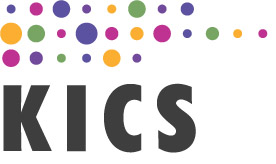Now 677 visitors
Today:211 Yesterday:642
Total: 3194
401S 102P 81R
2026-01-02, Week 1 |
| Member Login |
| Welcome Message |
| Statistics |
| Committee |
| TACT Journal Homepage |
| Call for Paper |
| Paper Submission |
| Find My Paper |
| Author Homepage |
| Paper Procedure |
| FAQ |
| Registration / Invoice |
| Paper Archives |
| Outstanding Papers |
| Author Homepage |
| - Paper Procedure |
| - Journal Procedure |
| - Presentation Tips |
|
| Proceedings |
| Program with Papers |
| Plenary Session |
| Tutorial Session |
|
| Presentation Assistant |
| Hotel & Travel Info |
| About Korea |
| Accommodation |
| Transportation |
| VISA |
| Other Infomation |
|
| Photo Gallery |
| Scheduler Login |
| Seminar |
| Archives Login |
|
| Sponsors |

|

|

|

|

|

|

|

|

|

|

|

|
|
|
|
|
| Save Q&A |
 |
* Edit or answer any Q&A by selecting Q&A number Hyper Link below + Write button (Save)
|
 ICACT20230046 Question.1
ICACT20230046 Question.1
Questioner: fialle@g.skku.edu 2023-02-21 오후 7:48:57 |
 ICACT20230046 Answer.1 ICACT20230046 Answer.1
Answer by Auhor nanduris@cdac.in 2023-02-21 오후 7:48:57
Chrome  Click!! Click!! |
| In the proposed model, sensitive data are stored in the blockchain. The integrity of these data is guaranteed by the blockchain. How can it guarantee the confidentiality of these sensitive data stored in the blockchain? |
The data that is stored in the Blockchain network can be accessed only by authorized users only as Hyperledger Fabric is a permissioned network. Its not only the user authorization even the application that is used to fetch data from Blockchain also needs to be registered with the system then only authorized users communicating through already registered applications only will be allowed to access the data. |
 ICACT20230046 Question.2
ICACT20230046 Question.2
Questioner: fialle@g.skku.edu 2023-02-21 오후 7:48:41 |
 ICACT20230046 Answer.2 ICACT20230046 Answer.2
Answer by Auhor nanduris@cdac.in 2023-02-21 오후 7:48:41
Chrome  Click!! Click!! |
| How can your model prevent the sensitive data stored in the blockchain (Fabric) from information leakage by internal malicious nodes? |
Only authenticated users will be allowed to access the data as Fabric supports permissioned Blockchain network. The fabric uses Raft as a consensus algorithm which is nothing but a crash fault tolerant algorithm. If we want to take additional precautions even in permissioned network where only authorized users or nodes can take part, then we can use BFT variant consensus algorithms in Fabric which ensure that the data integrity will never be compromised in the event of malicious nodes. Further, the channel concept of Hyperledger Fabric does not leak the data to all authorized participants until and unless they are all connected through a shared channel. We can create any number of such channels to separate out users, nodes being monitored in to specific groups. |
| |






